Knotty, bumpy, and sometimes hairy, root vegetables aren’t going to win any beauty contests. But these earthy delights are bursting with intriguing flavors and loads of vitamins, minerals, and phytonutrients.
Turnips, parsnips, rutabagas, celeriac, and parsley root can be lovely and soulful when braised with meat. They are also sturdy enough to substitute for pasta and rice. And they can be prepared in diverse ways.
Root vegetables are good keepers and will store for weeks in the refrigerator, or even months in a root cellar. On top of all that, they’re cheap!
Here’s a guide to some of our favorite root veggies, as well as many creative ways to enjoy them.
Kitchen Tricks
- No need to peel small, tender parsnips, turnips, and parsley root, but older veggies have tough skins that should be removed. Larger parsnips might also have a fibrous core that needs to be cut away.
- Rutabagas are often sold with a wax coating to maintain moisture. It usually comes off easily with a peeler. The rutabaga flesh is quite hard, so it works well to slice them thinly before cooking.
- Some root veggies turn brown when exposed to air after cutting. Put them in a bowl of water with some lemon juice if you can’t cook them right away.
- To temper the strong flavor of turnips and celeriac, blanch in boiling water for a few minutes before cooking.
Shopping & Storage Tips
- Look for small to medium-size root vegetables that are firm. Avoid ones with “whiskers” or brown patches.
- If you buy root veggies that still have green tops, remove them before storing (you can freeze them for stock if you like) because they draw moisture from the roots.
- Root vegetables store well in perforated bags in the refrigerator. Turnips and parsley root will keep for about a week, rutabagas for two weeks, and celeriac and parsnips for two to three weeks. Lucky enough to have a root cellar? You can store the veggies for months.
Nutritional Know-How
- Root vegetables are high in fiber, which helps reduce excess serum cholesterol. Parsnips contain nearly double the amount of fiber found in carrots.
- Rich in a range of vitamins — especially vitamins A, C, and K — root vegetables also contain a host of minerals drawn from the soil, including potassium, calcium, iron, iodine, and phosphorus.
- Root veggies are antioxidant powerhouses. Turnips, for example, contain antioxidants in the form of sulfuric compounds called glucosinolates.
- Some root veggies have a high glycemic index — parsnips, in particular — and should be eaten in moderation to avoid blood-sugar spikes. Adding fats like butter, olive oil, and coconut oil helps reduce glycemic load.
Recipes
Teriyaki-Braised Turnips and Greens With Bacon
East Asia meets the American South in this lively recipe. If your turnips have attached greens, use them instead of the collard greens.
Makes six servings
Preparation time: 30 minutes
Teriyaki Sauce
- 1 tbs. minced gingerroot
- 2 cloves garlic, minced
- 1/2 tsp. hot pepper flakes
- 3 tbs. brown-rice vinegar
- 2 tbs. honey
- 3 tbs. tamari
Main Dish
- 2 slices thick-cut, nitrate-free bacon, cut into ½-inch pieces
- 1 medium shallot, thinly sliced
- 2 pounds turnips, washed and cut into wedges
- 1 bunch collard greens, about 4 cups chopped
- 1 bunch green onions, chopped
Directions
- Mix the sauce ingredients together in a small bowl. Place the bacon in a large cast-iron skillet, and render fat over low heat.
- When the bacon is beginning to brown, add the shallots and caramelize them while the bacon crisps. Turn up the heat to medium, and stir in the turnips until they are browned a bit on each side.
- Mix in the greens and sauce, and cook over medium-high heat, stirring occasionally, until the turnips are tender, about 10 minutes.
- Stir in the green onions and serve.
Creamy Root-Vegetable Soup
This rich soup works well with a combination of root vegetables. Top off with a drizzle of fruity extra-virgin olive oil..

Makes four servings
Preparation time: 40 minutes
Ingredients
- 2 tbs. ghee, coconut oil, or extra-virgin olive oil
- 1 yellow onion, diced
- Pinch of sea salt
- 4 cups peeled and diced assorted root vegetables
- 1/2 tsp. sea salt and freshly ground pepper to taste
- 4 cups vegetable stock
- 1/2 tsp. ghee, coconut oil, or extra-virgin olive oil
- 1 cup sliced shiitake mushrooms, stems discarded
- 1 cup heavy cream or coconut milk
- 1 tbs. toasted-sesame oil (optional)
- Chopped fresh herbs to taste (e.g., rosemary, marjoram, sage)
Directions
- Heat the 2 tablespoons ghee in a large Dutch oven. Add the onions and a pinch of salt, and sauté until they’re beginning to brown, about five minutes.
- Add the root vegetables, salt, and pepper, and sauté, stirring occasionally, until the veggies begin to soften and turn light brown, about 10 minutes. Add the vegetable stock, cover, and simmer for 10 to 15 minutes over medium-low heat.
- Meanwhile, sauté the mushrooms in 1/2 teaspoon ghee, and set aside for garnish. When the vegetables in the soup are tender, add the cream and purée the soup.
- Serve the soup in bowls topped with the mushrooms, a drizzle of the toasted-sesame oil, and a sprinkle of chopped fresh herbs.
Root-Vegetable “Risotto”
This light, grain-free take on risotto uses grated root veggies in place of the traditional arborio rice. For a creamy risotto, sub in 1/2 cup coconut milk for part of the vegetable stock.
Makes six servings
Preparation time: 40 minutes
Ingredients
- 4 cups mushroom or vegetable stock
- 1/2 cup dried mushrooms, crumbled
- 2 tbs. extra-virgin olive oil
- 1 cup diced onion
- 1 shallot, minced
- 1/2 tsp. sea salt and freshly ground black pepper to taste
- 6 cups grated root vegetables (parsnips, parsley root, and celeriac are best)
- 2 tbs. nutritional yeast
- 2 tbs. walnut oil
- 2 crisp tart apples, finely diced
- 30 sage leaves
Directions
- Bring the stock to a simmer in a medium saucepan. Add the dried mushrooms to the stock, and simmer while you prepare the rest of the dish.
- Heat the oil in a large Dutch oven. Add the onions, shallots, and salt and pepper, and caramelize over medium-low heat. When the onions are golden brown, turn the heat up to medium and gradually stir in the root vegetables. Add the nutritional yeast. When the root vegetables have softened, add the simmering stock one ladle at a time while stirring to incorporate the liquid. Cover the pan, and allow to simmer gently over very low heat for five minutes.
- Meanwhile, for an apple-sage topping, heat the walnut oil in a small saucepan. Add the apples and whole sage leaves, and cook for three to five minutes to flavor the oil, crisp up the leaves, and warm the apples. Serve the risotto topped with the apple-sage mixture.
Parsnip Fries With Beet Ketchup
Want to get really roots-y? Dip these root-veggie fries — parsnips are super, but celery root, parsley root, and rutabagas work, too — into a homemade beet ketchup.
Makes about six servings
Preparation time: 25 to 30 minutes
Ingredients
- 3 large parsnips, about 2 pounds, peeled and cut into large strips, about 3 x 1/2 x 1/2 inches
- 1 tbs. coconut oil or extra-virgin olive oil
- Sea salt and freshly ground black pepper to taste
- 1 tsp. chopped fresh rosemary or other fresh herb (optional)
Directions
- Heat oven to 450 degrees F.
- Brush a large baking sheet with coconut oil, and arrange the parsnips in one layer; be sure to leave space in between the parsnips so they can brown — you may have to bake in batches.
- Bake for 20 to 25 minutes, shaking every 10 minutes or so, until golden brown on all sides. Sprinkle with salt, pepper, and chopped herbs, and serve hot.
Beet Ketchup
A creative and healthy alternative to commercial ketchup, which is usually made with high-fructose corn syrup. Try to make this the day before serving so the flavors can meld.
Makes about 1 cup
Preparation time: 45 minutes
Ingredients
- 1 cup peeled and diced cooked beets
- 1/4 cup apple cider vinegar
- 1/4 cup honey
- 1 tbs. minced onion
- 1 tbs. minced gingerroot
- 1/4 tsp. sea salt
- 1/4 tsp. ground cloves
- Freshly ground black pepper to taste
Directions
- Simmer the ingredients together in a small pot for 10 to 15 minutes.
- Transfer to a blender and blend until smooth.
- Return to the small pot and cook another 10 to 15 minutes, stirring constantly until thickened. Adjust seasonings to taste.
- Cool to room temperature before serving.
Braised Lamb Shanks With Parsnips and Parsley-Mint Gremolata
Parsnips impart an aromatic quality to this slow-cooked dish, which is perfect for a Sunday supper. Mint adds a fresh flavor element to gremolata, a dry condiment traditionally made with parsley, lemon zest, and garlic.
Makes two servings
Preparation time: 1 hour 45 minutes (includes 20 minutes hands-on time)
Ingredients
- 1 tbs. extra-virgin olive oil
- 2 1-pound lamb shanks, rinsed and patted dry
- 2 medium shallots, thinly sliced
- 1/2 tsp. sea salt
- Freshly ground black pepper to taste
- 2 large parsnips or parsley root, peeled and cut into large chunks (about 1 x 1 x 2-inch pieces)
- 1 cup chicken stock
- 1 cup dry sherry (or apple or pear cider)
- 1 tbs. chopped fresh rosemary
Gremolata
- 1/3 cup chopped fresh parsley
- 1/4 cup chopped fresh mint
- Zest of 2 lemons (about 1 tbs.)
- 2 cloves garlic, minced (about 2 tsp.)
Directions
- Preheat the oven to 350 degrees F. Heat a large stainless-steel roasting pan over medium heat, and add olive oil and lamb shanks. Sear the lamb on all sides, allowing them to release some of their fat. Add the shallots, salt, and pepper, and cook until the shallots are golden brown. Add the parsnips, stock, sherry, and rosemary to the pan. Stir to deglaze the pan, then cover the pan with aluminum foil and place in the preheated oven.
- Bake for about an hour, or until the lamb is tender. Remove the pot from the oven, and turn the temp up to 400 degrees F. Use a slotted spoon to transfer the lamb shanks, parsnips, and shallots onto a baking sheet. Roast in the oven until browned, about 15 minutes.
- Meanwhile, skim the fat from the cooking liquid, then simmer the cooking liquid until slightly thickened. While the lamb is roasting and the liquid is reducing, prepare the gremolata by mixing the ingredients together in a small bowl. Arrange the lamb and veggies on a platter and top with some of the reduced cooking liquid and a sprinkle of gremolata.
(→) Love cold-weather cooking meals that put root veggies front and center?
Try these “5 Recipes Using Winter Root Vegetables.”
This piece has been updated. It originally appeared as “Back to Your Roots” in the November 2014 issue of Experience Life.
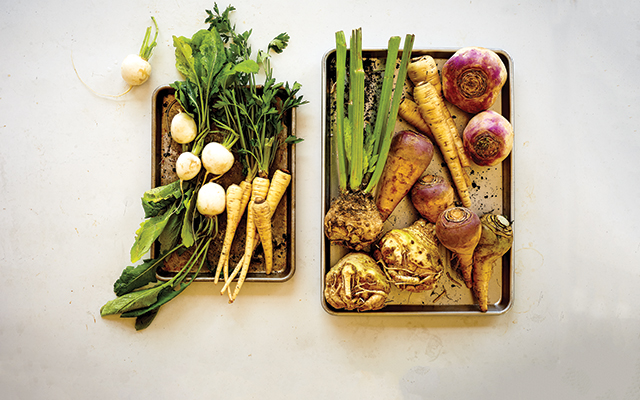
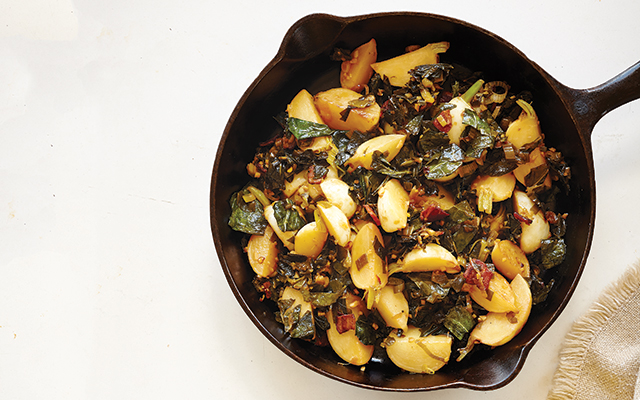
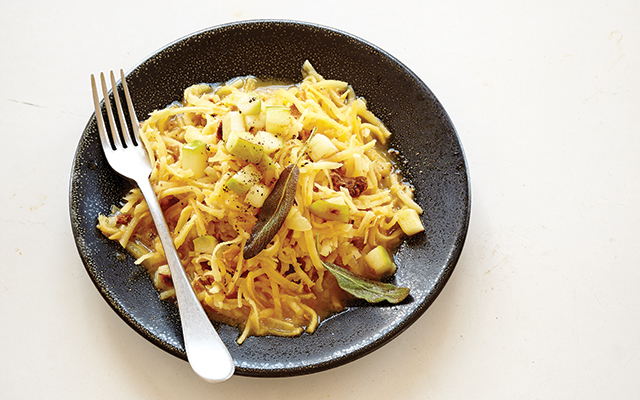
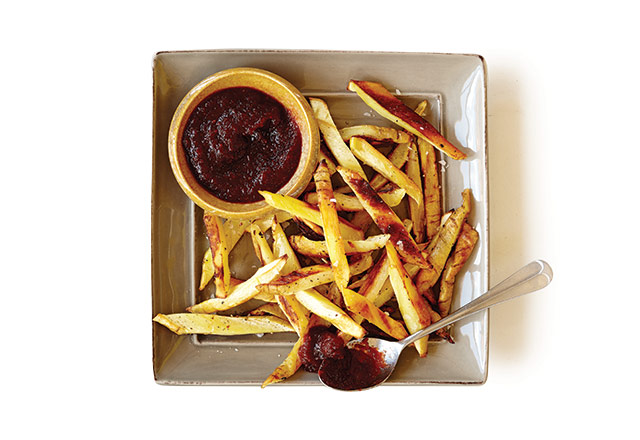
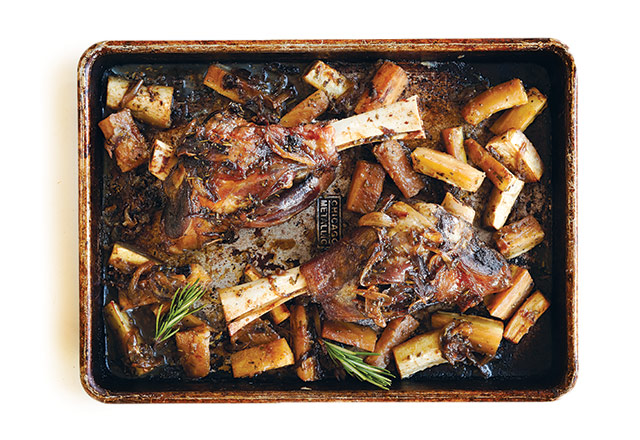
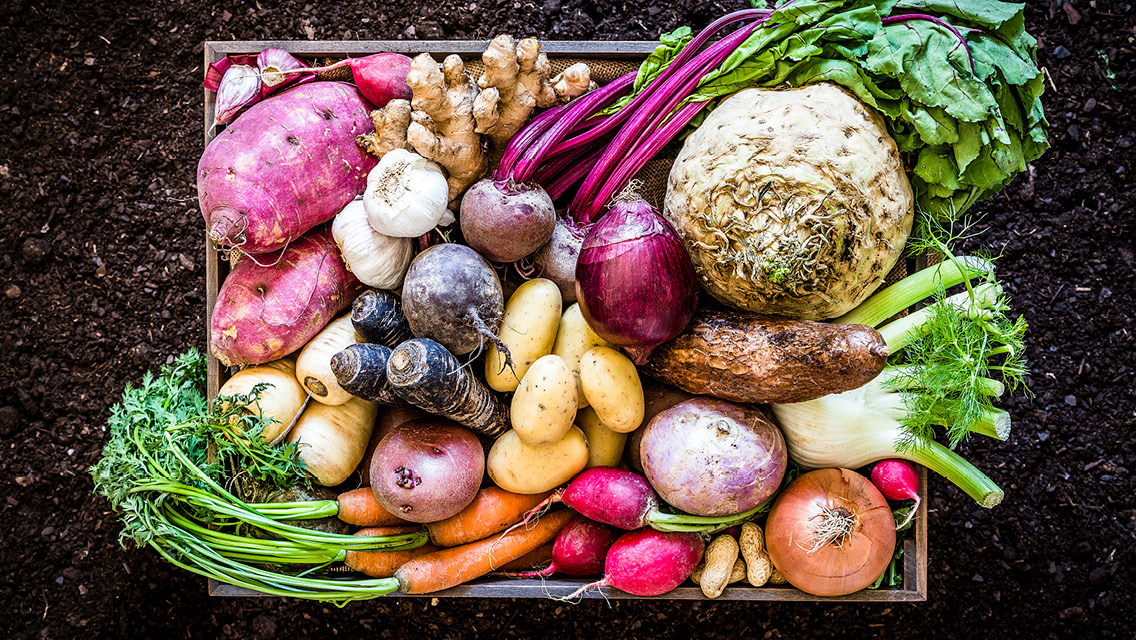
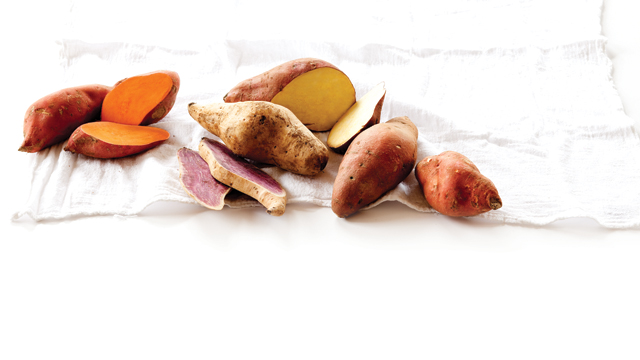
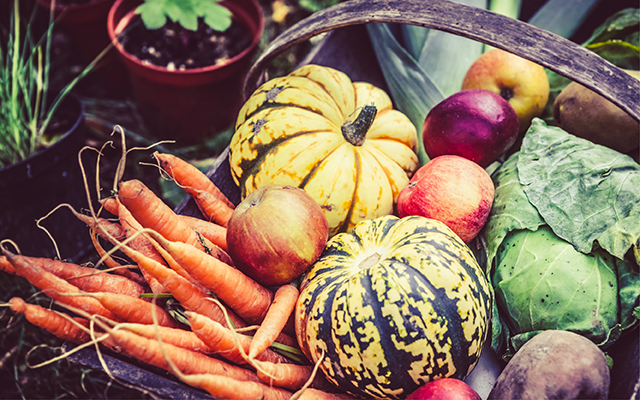
This Post Has 0 Comments